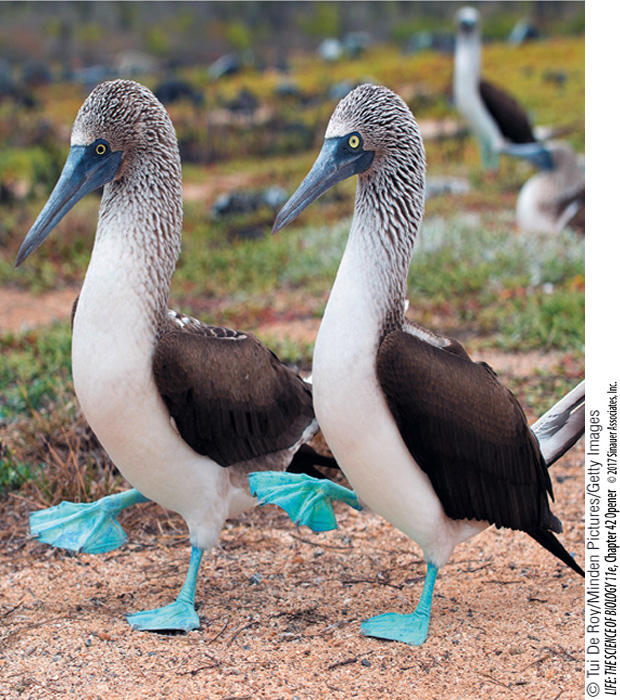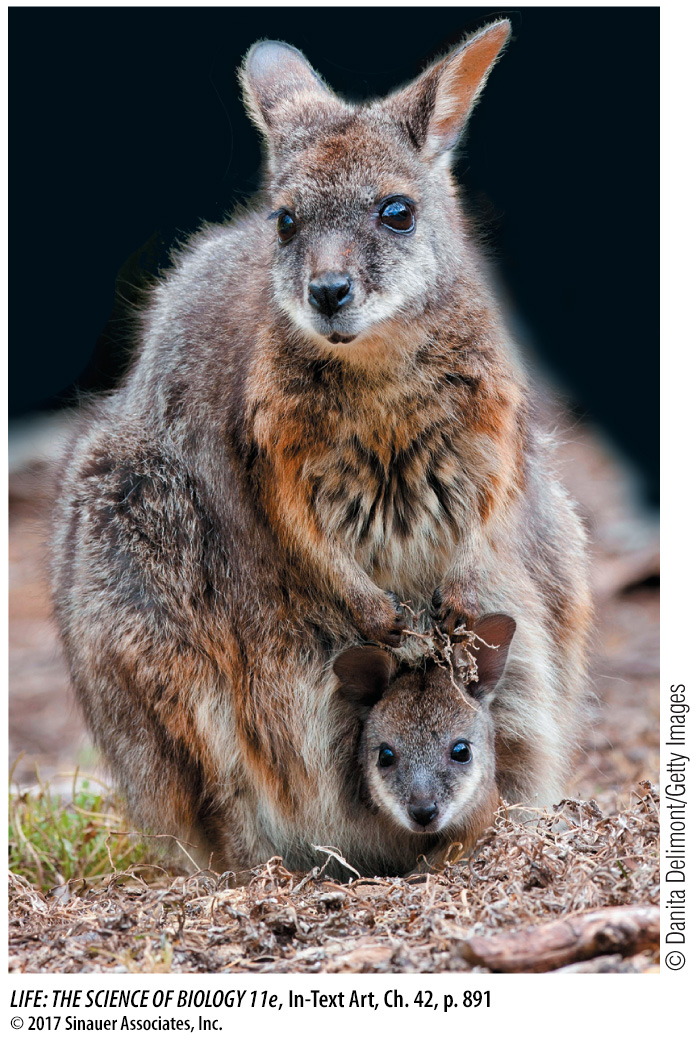Chapter Introduction
891
42
key concepts
42.1
Asexual Reproduction Is Efficient but Limits Genetic Variability
42.2
Sexual Reproduction Involves the Union of Haploid Egg and Sperm
42.3
Male Sex Organs Produce and May Deliver Sperm
42.4
Female Sex Organs Produce Eggs and Nurture Embryos
42.5
Fertility Can Be Controlled
Animal Reproduction

investigating life
No Time to Waste
Female tammar wallabies become sexually receptive and mate soon after they give birth. The resulting embryo can be born any time from a month to a year later. Humans have a set 9-

Answering the “why” question is not difficult. Reproductive success is the currency of evolution. Reproductive success depends on how many offspring a female can produce and on the chances that those offspring survive, reproduce, and pass on their genes to the following generation. Mating soon after giving birth (as the wallaby does) can maximize the number of offspring a female produces, but it does not necessarily maximize the survival and success of those offspring. Survival of offspring in many species depends on the ability of the mother to provide maternal care. Mammalian mothers produce milk to nourish their young, and that has an enormous energy cost. Therefore the females of many mammalian species do not become fertile and sexually receptive until they have weaned their young. But, this is not true for the tammar wallaby.
The large energy investment that a tammar wallaby mother makes to successfully rear a single offspring means that giving birth while still having one joey in the pouch lowers the chances of having either of those young survive. The adaptation of this species is developmental arrest, or diapause. The fertilized egg begins to develop into an embryo, but at an early stage of development its cell divisions cease, its metabolism decreases, and it remains in the uterus without implanting in the uterine lining as long as the previous offspring is suckling. If that offspring dies or is weaned, the quiescent embryo in the uterus is activated, implants in the uterine lining, and continues its development. Having an embryo ready to go when conditions are right is a way of maximizing reproductive success, but the “how” question remains.
What signal controls the breaking of diapause in the tammar wallaby?